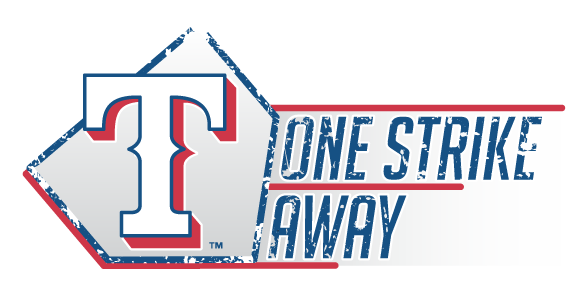Pros, Cons Of Potential Starting Pitcher Acquisitions
/While we wait for the decision on whether Yang Hyeon-Jong's Korean team accepts Texas's $1.5 million bid, we instead settle on news that the Rangers have signed RHP Ross Wolf (who pitched for the Rangers in 2013) and infielder Ed Lucas (who was recently designated for assignment to clear room on the 40-man roster) to minor league deals with invites to spring training.
Other than that, we're all playing the waiting game until the Winter Meetings get underway. But while we wait, in the spirit of the offseason, let's speculate on some pitchers the Rangers might be interested in, shall we?
1. Jordan Zimmerman: Of all the starters pitching on one-year deals in 2015, Zimmerman is probably the most interesting; he's a legit number two coming coming off his best season (+5.2 fWAR in 199.2 IP), combining a solid 22.8% strikeout rate with a minuscule 3.6% walk rate on his way to a 2.66 ERA (3.10 xFIP). He would look excellent sandwiched between Yu Darvish and Derek Holland in the rotation. The downside? He's owed $16.5 million in 2015, a figure he should outproduce, but would leave Texas with very little money leftover this offseason.
2. Mat Latos: Latos seemed to have the pedigree of a fringe-ace... a big fastball and a power slider that induced nice strikeout numbers before last year. Then, last year happened. He threw only 102.1 innings and his strikeout rate went way down along with his velocity (averaging 90.1 MPH compared to a career average of around 94). He's projected to earn $8.4 million through arbitration in 2015, and would be an interesting buy-low candidate if the Rangers believe his 2014 performance was due more to injury than a sign of things to come.
3. Ian Kennedy: Last week I wrote of the Rangers purported interest in Kennedy, an affordable #3 who makes up in durability and consistency what he lacks in overall dominance. But that's what he's supposed to be, no? He won't cost a lot in terms of prospects and it's only a one-year commitment. The relative safety he offers compared to the rest of this group make him the most realistic, albeit boring, option on this list.
4. Andrew Cashner: Cash is cheap, controllable for two seasons rather than one, and has a checkered injury history. Doesn't he sound like the perfect fit for the Rangers? I think so. In spite of his decent peripherals (career 18.4%/7.6% K/BB rates) and excellent lifetime GB rate (50.9%), the Padres have to view him like a pitcher with some untapped potential, therefore the asking price will be pretty steep. He has more value to San Diego right now than any other team in the league.
5. Johnny Cueto: I used to be curious who would end up as a better big league pitcher, Cueto or ex-Red, ex-Ranger Edinson Volquez. Johnny erased those thoughts almost immediately. Since 2010 he has generated +14.5 fWAR (+2.9 fWAR/year), though he's missed some time over that stretch due to injury. His full season averages make him closer to a 4-win pitcher than a 3-win pitcher, though he's eclipsed the 200-inning plateau only twice in his career. When he's healthy, he's a low-one/high-two type starter, meaning Cincinnati shouldn't let him go for anything less than one of the Rangers top-3 prospects, but because of that fact he seems like a long-shot to end up in Arlington in 2015.
6. Tyson Ross: Who isn't available to be traded for from the Padres rotation? Ross is coming off an excellent year for San Diego (2.66 ERA in 195 IP), conflating a robust ground ball rate (57%) with a strong 24% strikeout rate; pitchers normally don't do that. Most strikeout pitchers are fly ball pitchers. Since he isn't arbitration eligible until after 2015 -- meaning he still has three years of team control -- it immediately makes him the most valuable of the Padres' troika of starters. With Kennedy and Cashner being far more likely acquisitions, Tyson Ross's value to Texas would be far greater, since he would be in the rotation -- along with Holland and Martin Perez -- through the Yu Darvish Championship Window. I'm skeptical that Jon Daniels would be willing to part with the kind of young talent in would take to get Ross, but it would make a lot of sense. The Rangers would essentially have to forget about the starting rotation until 2017.
7. Cole Hamels: If Philadelphia waits a year, JD will be all over him. He's a #1 starter, he's left-handed, and he would -- don't kill me for saying this -- make re-signing Darvish less of a priority in the short-term. Unfortunately, the Red Sox and Cubs, who have the prospects to shed and can absorb Hamels's contract right now, are involved in the trade bidding. From the Rangers-fan-perspective, we can only pray that Ruben Amaro's asking price will be too high this winter and the subsequent trade deadline that follows in July, that he gets fired next offseason, and the new GM will be willing to ship Hamels to Texas. For the now, it just doesn't make sense.
I deal cards at the casino, but I'll always be a gambler first. If I had to place odds on the Rangers acquiring any one of these starting pitchers, I wouldn't place better than 20:1 odds on anyone not named Ian Kennedy. He remains the most likely candidate to get traded for, particularly taking the payroll into consideration.
However, if I was putting odds on Texas trading for one out of these seven, I think that's pretty likely. Maybe 5:1 or better. That's something, I guess.
